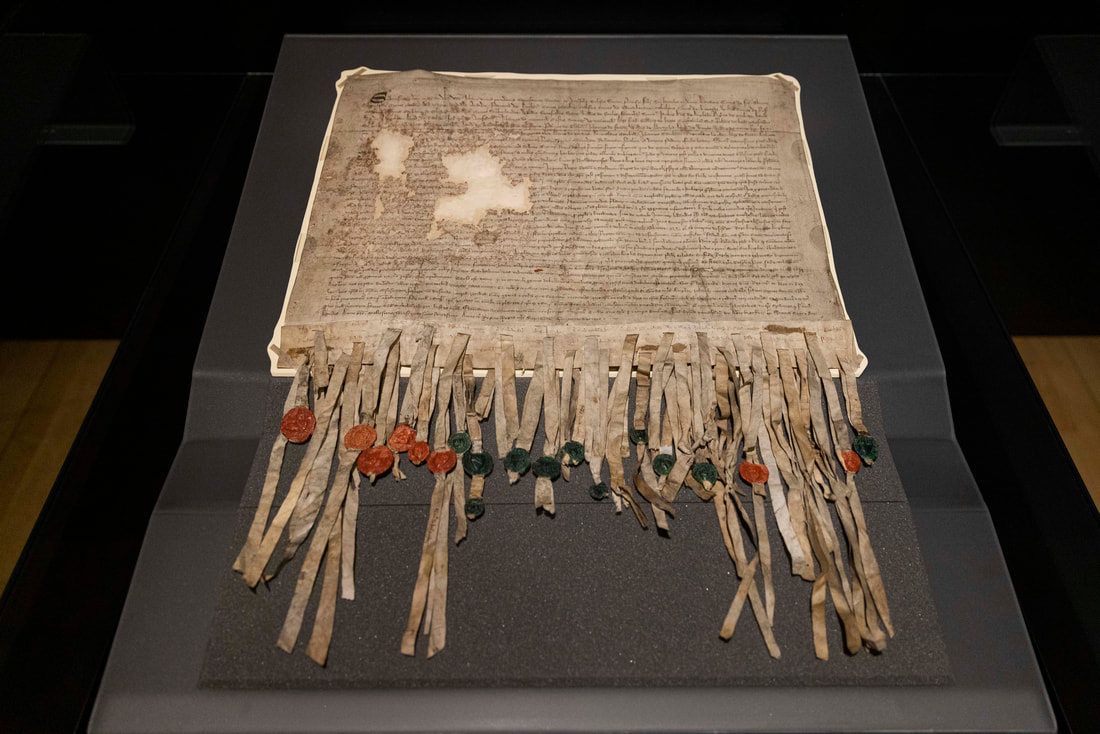The Declaration of Arbroath
on display for the first time in 18 years at the National Museum of Scotland
on display for the first time in 18 years at the National Museum of Scotland
"As long as a hundred of us remain alive, never will we on any conditions be subjected to the lordship of the English. It is in truth not for glory, nor riches, nor honours that we are fighting, but for freedom alone, which no honest man gives up but with life itself".
The best known words in the Declaration of Arbroath, foremost among Scotland's state papers and most famous historical record held by National Records of Scotland.
